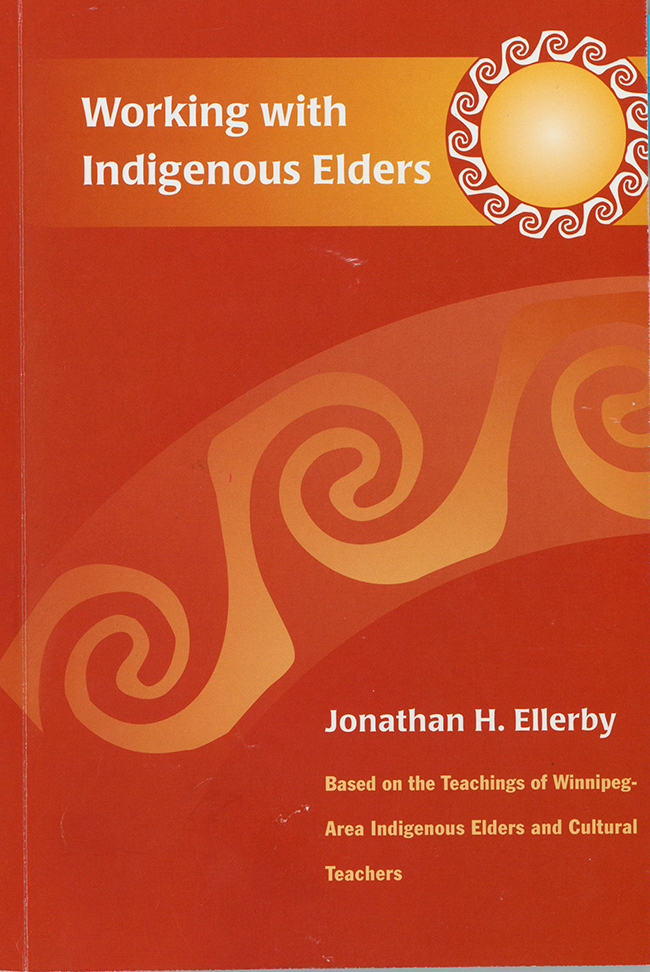Book review: Work with Elders in a respectful, dignified manner
 Reviewed by Karl Hele
Reviewed by Karl Hele
Jonathan H. Ellerby’s Working with Indigenous Elders is aimed primarily at Healthcare institutions and providers to assist in working with Elders in a respectful, dignified, and culturally appropriate manner. While the book is attributed to Ellerby, he is very clear that various Elders, Healers, Teachers, and Cultural advisors contributed to its form, content, and direction. This collective methodology, albeit unrecognized authorship, makes for a very clear guide. The book covers a number of topics including the basic understandings of who is an Elder, the qualities of an Elder, and how to determine an Elder’s credentials and how to work together in an institutional setting.
Ellerby notes that many of the problems in healthcare institutions faced by Elders comes not from prejudice but from misunderstanding and cultural missteps. One example found in the book rests on the Western method of dialogue and questions whereas Indigenous Elders may seem reserved, quiet, and reluctant to speak. Working with Elders is simply designed to offer a starting point to avoid cultural missteps while helping Western institutions fully engage successfully with Elders.
The second section of the book, “Basic Understandings,” discusses the basics of determining who is an Elder, what qualities Elders have, the importance of cultural protocols, as well as how Elders are educated, trained, certified, and credentialized. Ellerby notes that Elders fall into three basic categories: Community Elders, Elders/Healers, and Elders/Teachers. For the book, the Elders/Healers/Teachers are the focus. While the categories are not seen as discrete, Ellerby sees the Community Elder as holding knowledge about the community as it relates to history, hunting, and other forms of practical knowledge; he does not completely exclude these individuals from the other roles for Elders. He also notes that while advanced age is a general feature for an Elder, young people may have specific knowledges and may be viewed akin to an Elder but do not carry that honourific. Additionally, and uniquely, Ellerby notes that Elders can come from Christianized backgrounds as well as non-Christian backgrounds. In reminding people of the variety of Elders and their backgrounds, he notes that not every Indigenous client of a Healthcare institution will be comfortable with any ‘old’ Elder. I also liked how Ellerby deftly argues that Elders credentials come from not only living a good life, but from experience, knowledge, and community recognition. His readers will learn that Elders who fail to identify where they gained their knowledge (even in a general way), identify the community, and act out of profit are not truly Elders by Indigenous standards.
The last section of Ellerby’s work nicely discusses issues of payment and workload. This information would serve to remind institutions that Elders do need some form of payment and that a refusal to negotiate payment does not mean someone is happy with what is offered. Instead, the refusal to negotiate, instead is presented as protecting knowledge and Indigenous belief that healing is a gift from the Spirit which cannot be bartered or sold. Instead, Ellerby notes that institutions need to work with either people who know the Elder or cultural advisors to determine appropriate compensation. Finally, Ellerby addresses the tricky issues of confidentiality and documentation. He does note, however, that the willingness to document varies from Elder to Elder and often rests on cultural understandings and interactions with the Indigenous client.
While Ellerby addresses Healthcare institutions directly, the information contained in this work can be utilized by all Western institutions including universities. It has sage advice about Elders, their roles, compensation, and how to interact with an Elder in a culturally respectful manner as well as importantly how to ensure that your institution has hired an actual Elder.
Jonathan H. Ellerby. Working with Indigenous Elders (Based on the Teachings of Winnipeg-Area Indigenous Elders and Cultural Teachers). Winnipeg: Aboriginal Issues Press, 2006.


